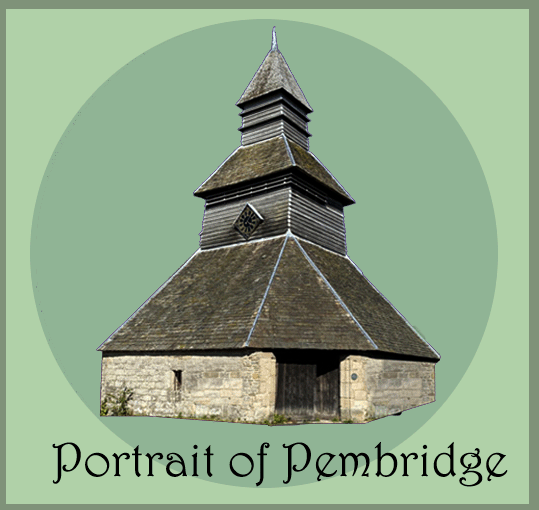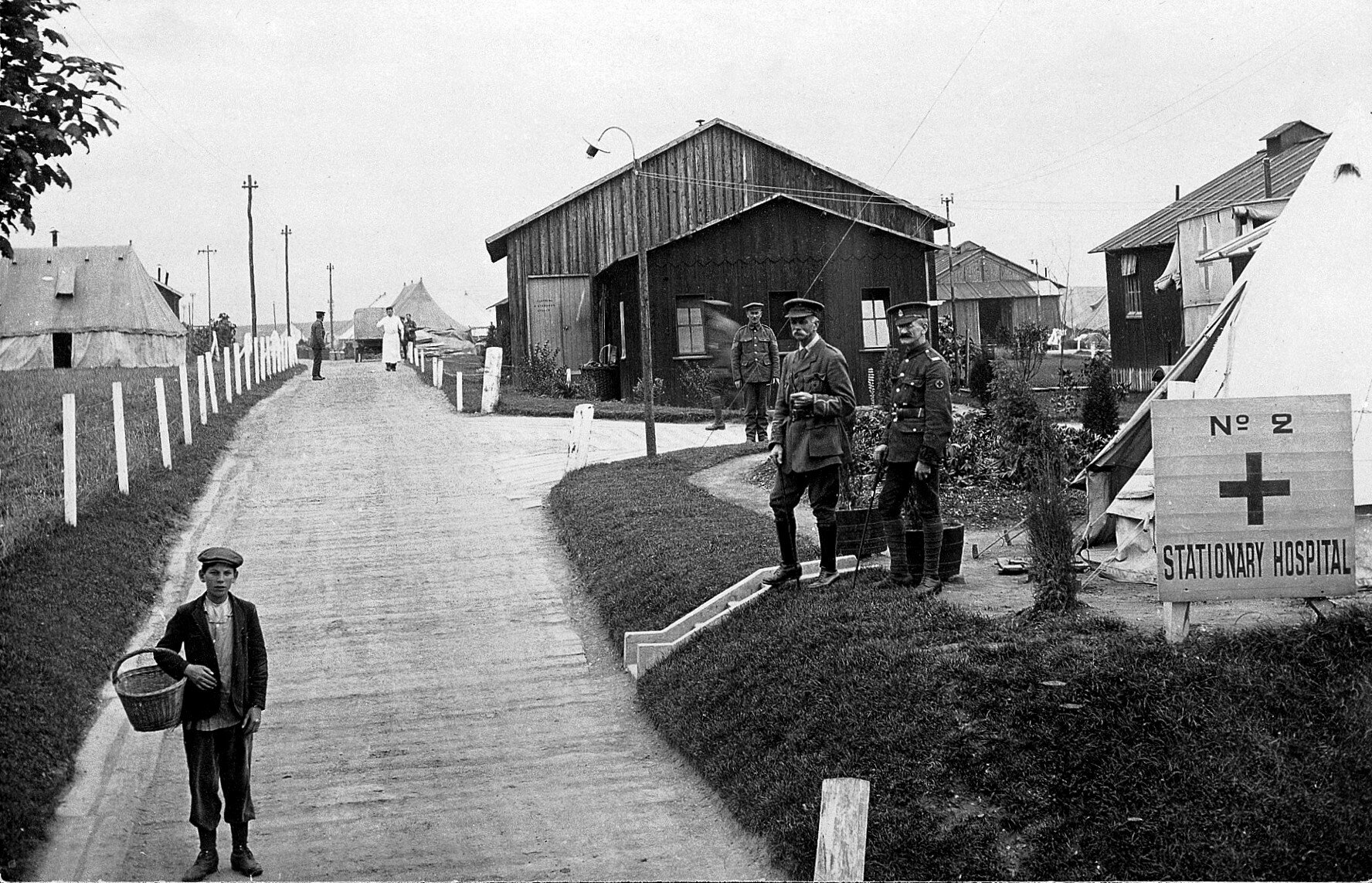William Thomas Jay, Lance Corporal, 2nd Battalion South Wales Borderers
The 1891 census states that William Thomas Jay was born in 1887 and was residing with his father, Thomas, his mother Eliza and two sisters at Nokelane Head, Herefordshire. William’s father, born in Hereford, is described as a labourer. His mother, Eliza, was born in Lyonshall. William, like his two sisters, was born in the parish of Pembridge. Their residence, including the kitchen, comprised four rooms.
In the 1901 census, William Jay is residing with his family at the same location. His father, Thomas, is described as a “waggoner on farm”. A waggoner was entirely responsible for care of horses under his control and attended to the watering, feeding and bedding of the horses as well as harnessing them and driving them in accordance with whatever work was to be undertaken - ploughing, reaping, harrowing and carting.
By 1901, two more children, a brother and sister, had been born.
It is possible that the family worshipped at The Nokelane Head Primitive Methodist Chapel as Thomas Jay was later to be married in a chapel.
Above photo: Nokelane Primitive Methodist Church, today (1)
By 1911, William Jay has moved to Great Cumberton, near Pershore, Worcestershire. Aged, 24, he is living as a lodger with one other (aged 28) in a two-room dwelling (including kitchen). His occupation in the 1911 census is stated as a domestic gardener.
In July, 1914, he marries Mabel Williams, a non-conformist, in a chapel wedding which was registered at Lyonshall. Three months later, 4th October 1914, Mabel Jay gives birth to a daughter, Elizabeth Ellen Jay. According to the 1911 census, Mabel Williams, born in Shobdon in 1891, was working as a “general servant domestic” along with two others for Mr. Henry Chester of the Olde Steppes, Pembridge.
In 1915, William Jay enlisted in The Monmouthshire Regiment. At some point, he was transferred to the 2nd Battalion, South Wales Borderers (87th Brigade, 29th Division). This would most likely have been when the 2nd Battalion, South Wales Borderers had returned to France in March 1916 to go to the Western Front, having been in Gallipoli the previous year.
“From this time the division (the 29th) was put into the British Front in the area north of the Ancre River, near to the German-held village of Beaumont Hamel. For the following three months the battalions in the division spent their time doing tours of trenches and training behind the lines to prepare for the large British offensive against the German position planned for the end of June. Following a 7-day artillery bombardment of the German front and rear areas, the battalions of the 29th Division were in position in their Assembly Trenches in the early hours of Saturday 1 July.
At 07:20 hours the huge Hawthorn mine was blown on the left of the division's position.
Above photo: Explosion of the mine under Hawthorn Ridge Redoubt during the Battle of the Somme (IWM)
The leading battalions in the attack left the British front line trench at 07:30 hours. The British casualties were severe, with many men never reaching the German front line.” (Wikipedia)
Above photo: Troops of the 2nd Battalion, South Wales Borderers, on the road to the trenches in the rain at Montauban, Somme, October 1916 (IWM)
In 1917 the battalion took part in The Arras offensive (April-May 1917).
“The Battle of Arras featured some notable successes. The opening advances, particularly at Vimy Ridge, achieved impressive gains with a relatively low casualty rate. The battle also succeeded in drawing German forces away from the French attack at the Aisne. Beyond the first few days however, casualties rose exponentially and the battle ground to a halt. The French offensive achieved little and ended with the disintegration of the French Army. There was no breakthrough - the battle had failed to win any strategic objectives and the Western Front remained in deadlock.” (IWM)
Above photo: The Arras Offensive (IWM)
The battalion then moved to Flanders and fought in several battles in the 3rd Battle of Ypres (July-November 1917) otherwise known as Passchendaele.
Above photo: A view of the front held by 29th Division in the Ypres Salient sector Passchendaele (NAM)
Finally, the battalion took part in The Battle of The River Lys (7th April - 29th April 1918) also known as the 4th Battle of Ypres.
Above photo: Battle of The River Lys (IWM)
An educated guess suggests that William Jay was wounded at The Battle of The River Lys. His route to the hospital from the front line would have been hazardous and complicated. He would have journeyed back to England in several stages.
“Regimental Aid Post (RAP)
The RAMC [Royal Army Medical Corps] chain of evacuation began at a rudimentary care point within 200-300 yards of the front line. Regimental Aid Posts [RAPs] were set up in small spaces such as communication trenches, ruined buildings, dug outs or a deep shell hole. The walking wounded struggled to make their way to these whilst more serious cases were carried by comrades or sometimes stretcher bearers. The RAP had no holding capacity and here, often in appalling conditions, wounds would be cleaned and dressed, pain relief administered and basic first aid given.
Above photo: Regimental Aid Post (Wellcome Collection)
If possible men were returned to their duties but the more seriously wounded were carried by RAMC stretcher bearers often over muddy and shell-pocked ground, and under shell fire, to the ADS.
Advanced Dressing Station (ADS)
These were set up and run as part of the Field Ambulances [FAs] and would be sited about four hundred yards behind the RAPs in ruined buildings, underground dug outs and bunkers, in fact anywhere that offered some protection from shellfire and air attack. The ADS did not have holding capacity and though better equipped than the RAPs could still only provide limited medical care.
Above photo: Advanced Dressing Station ADS (NAM)
Casualty Clearing Station (CCS)
These were the next step in the evacuation chain situated several miles behind the front line usually near railway lines and waterways so that the wounded could be evacuated easily to base hospitals. A CCS often had to move at short notice as the front line changed and although some were situated in permanent buildings such as schools, convents, factories or sheds many consisted of large areas of tents, marquees and wooden huts often covering half a square mile.
Above photo: Casualty Clearing Station (IWM)
A CCS would normally accommodate a minimum of fifty beds and 150 stretchers and could cater for 200 or more wounded and sick at any one time. Later in the war, a CCS would be able to take in more than 500 and up to 1000 when under pressure. Initially the wounded were transported to the CCS in horse-drawn ambulances – a painful journey, and over time motor vehicles or even a narrow-gauge railway were used. Often the wounded poured in under dreadful conditions, the stretchers being placed on the floor in rows with barely room to stand between them.
Gas was first used as a weapon at Ypres in April 1915 and thereafter as a weapon on both sides. Patients were brought in to the CCS suffering from the effects and poisoning of chlorine, phosgene and mustard gas among others.
From the CCS men were transported en masse in ambulance trains, road convoys or by canal barges to the large base hospitals near the French coast or to a hospital ship heading for England.
Ambulance Train
These trains transported the wounded from the CCSs to base hospitals near or at one of the channel ports. In 1914 some trains were composed of old French trucks and often the wounded men lay on straw without heating and conditions were primitive. Others were French passenger trains which were later fitted out as mobile hospitals with operating theatres, bunk beds and a full complement of QAIMNS (Queen Alexandra’s Imperial Miitary Nursing Service) nurses.
Above photo: Ambulance Train (IWM)
Emergency operations would be performed despite the movement of the train, the cramped conditions and poor lighting. Hospital carriages were also manufactured and fitted out in England and shipped to France.
Hospital barges
Many wounded were transported by water in hospital barges. Although slow, the journey was smooth and this time allowed the wounded to rest and recuperate. The barges were converted from a range of general use barges such as coal or cargo barges.
Above photo: Hospital Barge (IWM)
The holds were converted to 30 bed hospital wards and nurses’ accommodation. They were heated by two stoves and provided with electric lighting which would have to be turned off at night to avoid being an easy target for German pilots. Nurses would have to make their rounds in pitch dark using a small torch.
Stationary Hospitals, General Hospitals & Base Area
Under the RAMC were two categories of base hospital serving the wounded from the Western Front.
There were two Stationary Hospitals to every Division and despite their name they were moved at times, each one designed to hold 400 casualties, and sometimes specialising in for instance the sick, gas victims, neurasthenia cases & epidemics. They normally occupied civilian hospitals in large cities and towns, but were equipped for field work if necessary.
Above photo: A Stationary Hospital, Rouen (Wikipedia)
The Stationary/General Hospitals were located near railway lines to facilitate movement of casualties from the CCSs on to the coastal ports. Large numbers were concentrated at Boulogne and Étaples. Grand hotels and other large buildings such as casinos were requisitioned but other hospitals were collections of huts, hastily constructed on open ground, with tents added as required, expanding capacity from 700 to 1,200 beds. At first there was a lack of basic facilities – no hot water, no taps, no sinks, no gas stoves and limited wash bowls.
Hospital Ships and Military & War Hospitals at home
Most hospital ships were requisitioned and converted passenger liners. Despite the excellent nursing and medical care many patients died aboard because of their extreme wounds. The risk of torpedoes and mines as they crossed the channel was very real.” (2)
Above photo: Glencastle Hospital Ship sunk by a German torpedo, 1918 (Wikipedia)
On arrival at a British port the wounded were transferred to a home service ambulance train. It was at these railway stations that the British public got closest to the casualties of the war.
Above photo: Wounded Soldiers en route to a military hospital (3)
From there, the wounded went on to Military and War Hospitals which were divided into nine Command areas.”
William Jay died of his wounds on 25th May 1918 at 3rd Northern General Hospital, Sheffield.
Above photo: Northern General Hospital, Sheffield (4)
If it was at The Battle of The River Lys that Thomas Jay was wounded, he would only have spent four to six weeks at the hospital before he died.
In the UK, WW1, Pensions and Ledgers Index Cards, it would appear that at the time of William Jay’s death, Mabel, William Jay’s widow, was residing at Noke Cottage, Pembridge.
In April 1922, Mabel Jay remarried to a man with the surname “Kitson”.
Mabel Kitson’s claimant’s address is “Pleasant View, Erwood, Breconshire.
“Pensions would always be revoked if a widow re-married or entered a relationship with another man as he would be expected to provide for her and any children.” (NAM)
William Jay is buried at St Mary’s Church, Pembridge.
Above photo: William Jay’s headstone and grave (Lee Oxenham, CWGC)
Rory MacColl
Sources
1/ https://www.myprimitivemethodists.org.uk/content/chapels/herefordshire/m-r-herefordshire/nokelane_head_primitive_methodist_chapel
2/ https://www.thehistorypress.co.uk/articles/evacuation-of-the-wounded-in-world-war-i/
3/ https://texashistory.unt.edu/explore/collections/TBWP/
4/ https://www.picturesheffield.com/frontend.php?keywords=Ref_No_increment;EQUALS;s06447&pos=2&action=zoom
5/ https://www.mylearning.org/stories/how-the-first-world-war-affected-families/797




















